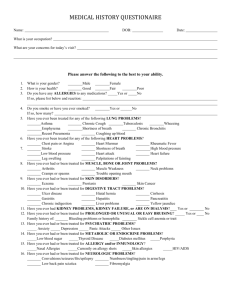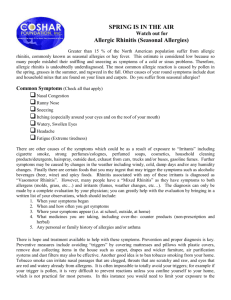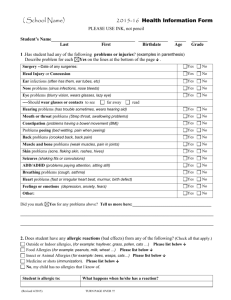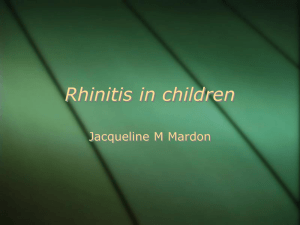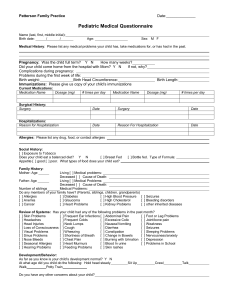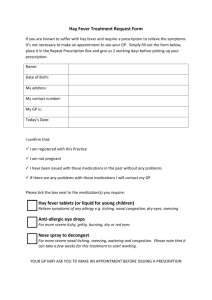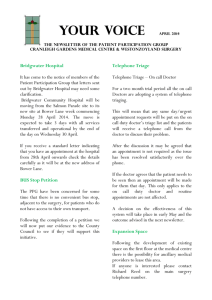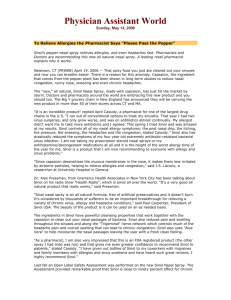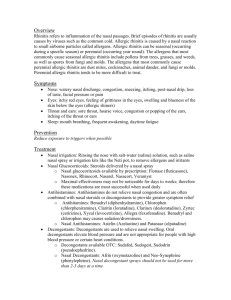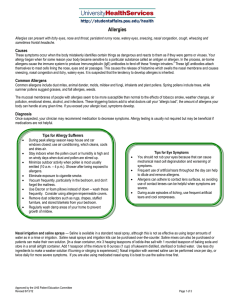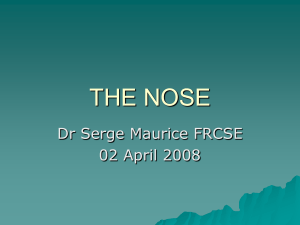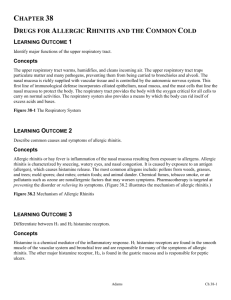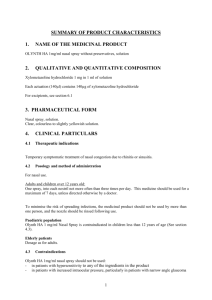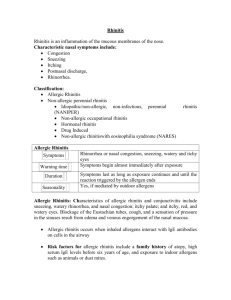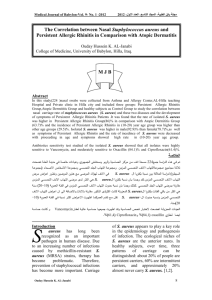Allergies (Hayfever)
advertisement
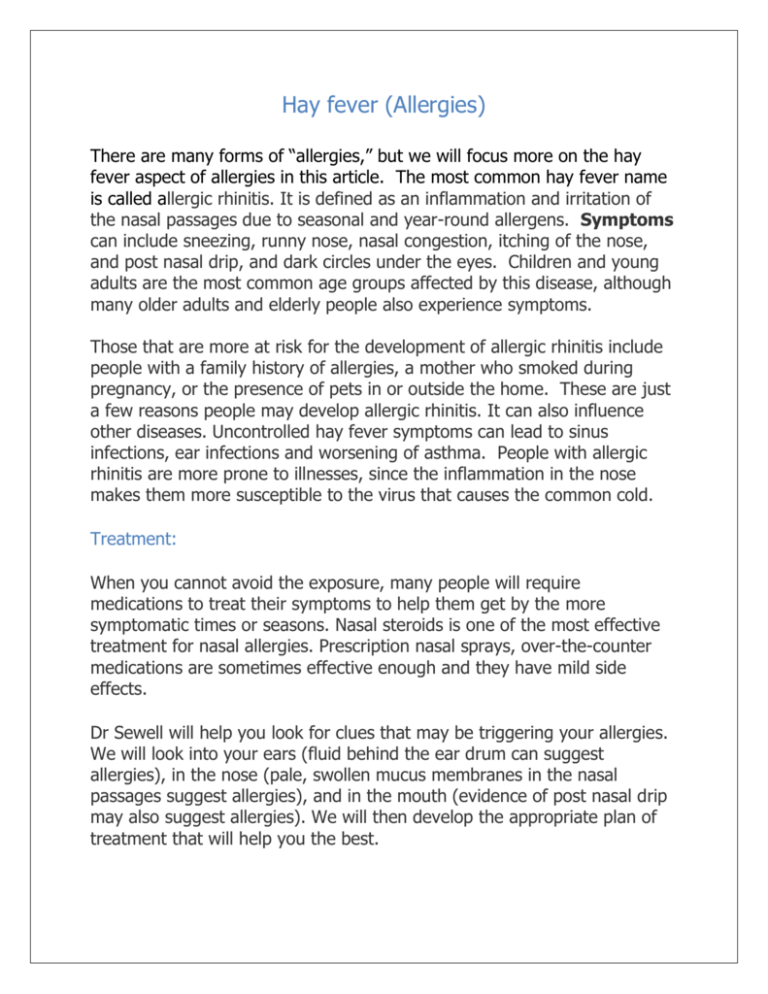
Hay fever (Allergies) There are many forms of “allergies,” but we will focus more on the hay fever aspect of allergies in this article. The most common hay fever name is called allergic rhinitis. It is defined as an inflammation and irritation of the nasal passages due to seasonal and year-round allergens. Symptoms can include sneezing, runny nose, nasal congestion, itching of the nose, and post nasal drip, and dark circles under the eyes. Children and young adults are the most common age groups affected by this disease, although many older adults and elderly people also experience symptoms. Those that are more at risk for the development of allergic rhinitis include people with a family history of allergies, a mother who smoked during pregnancy, or the presence of pets in or outside the home. These are just a few reasons people may develop allergic rhinitis. It can also influence other diseases. Uncontrolled hay fever symptoms can lead to sinus infections, ear infections and worsening of asthma. People with allergic rhinitis are more prone to illnesses, since the inflammation in the nose makes them more susceptible to the virus that causes the common cold. Treatment: When you cannot avoid the exposure, many people will require medications to treat their symptoms to help them get by the more symptomatic times or seasons. Nasal steroids is one of the most effective treatment for nasal allergies. Prescription nasal sprays, over-the-counter medications are sometimes effective enough and they have mild side effects. Dr Sewell will help you look for clues that may be triggering your allergies. We will look into your ears (fluid behind the ear drum can suggest allergies), in the nose (pale, swollen mucus membranes in the nasal passages suggest allergies), and in the mouth (evidence of post nasal drip may also suggest allergies). We will then develop the appropriate plan of treatment that will help you the best.

